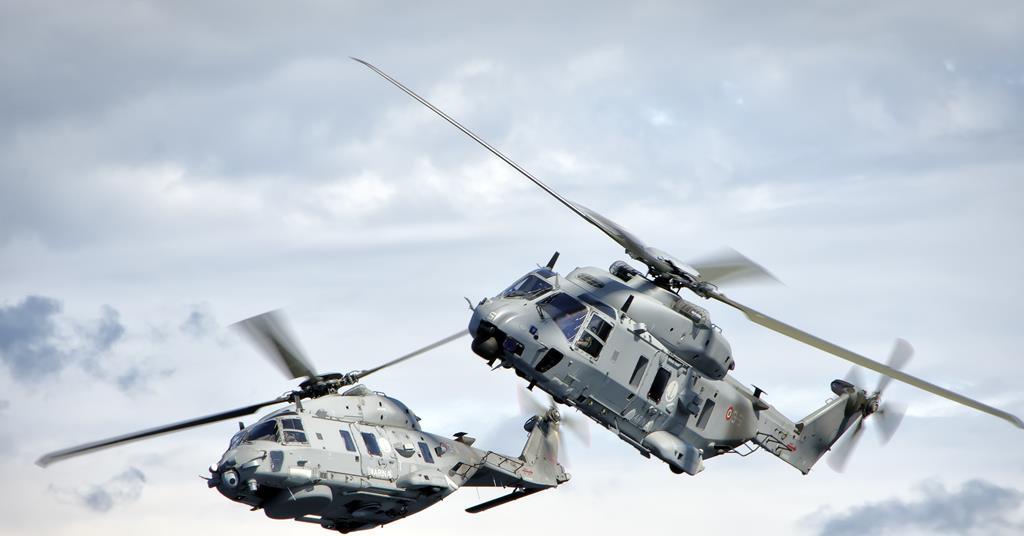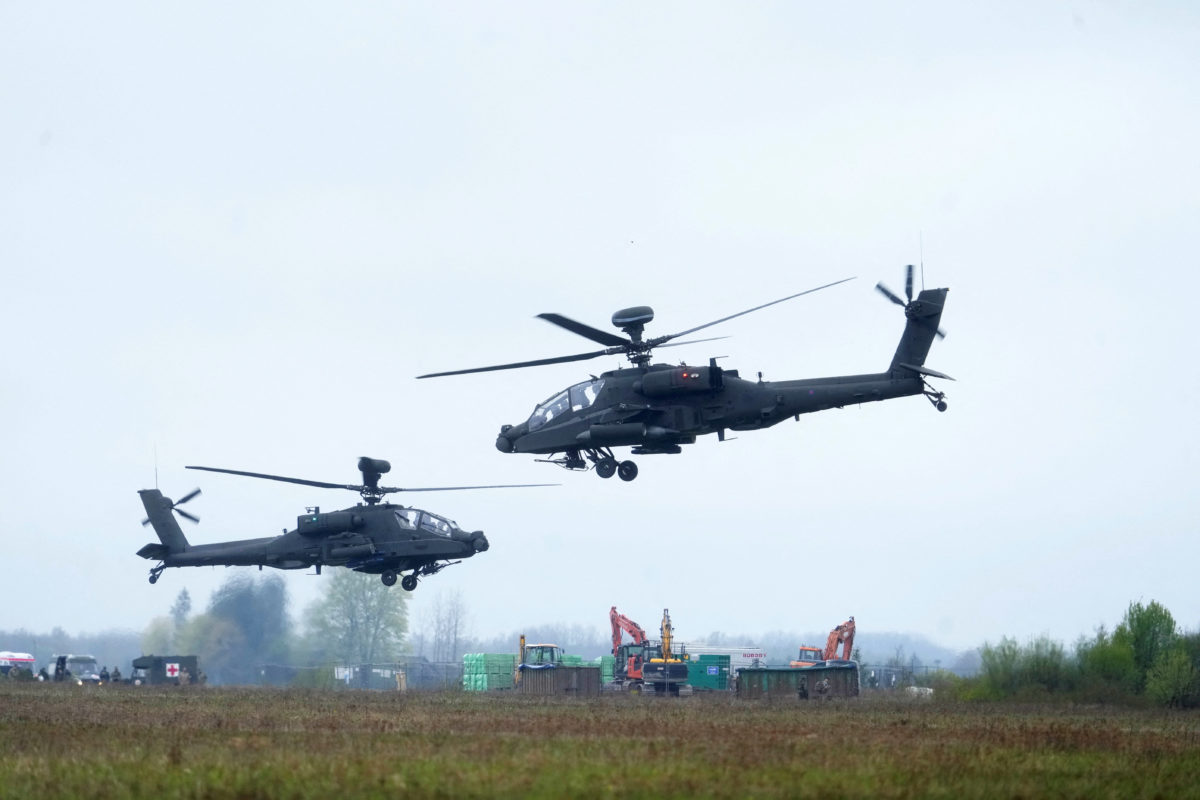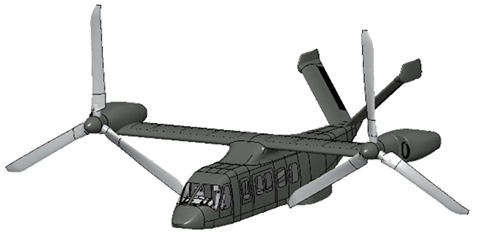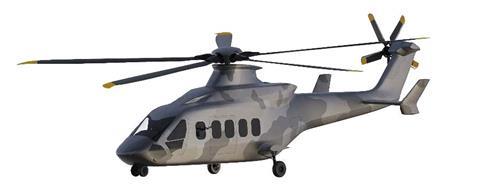NGRC project reveals concept studies, including high-speed compound rotorcraft and 17t tiltrotor
Concepts submitted to a NATO-led effort to develop a next-generation military rotorcraft include a 17t tiltrotor and two compound designs – including an apparent adaptation of Airbus’s Racer architecture – alongside two conventional helicopters.
However, save for the maximum take-off weight (MTOW) of the Leonardo-designed tiltrotor, little additional detail has been disclosed on the concepts proposed by the three participating airframers – the two European firms plus US manufacturer Sikorsky.
Source: Airbus Helicopters/NSPA
Airbus has proposed a high-speed concept based around its Racer architecture
Revealing the concepts at the Royal Aeronautical Society’s Cierva lecture on 11 November, Next Generation Rotorcraft Capability (NGRC) programme manager Cyril Heckel said he was pleased by the submissions.
“It was very helpful for us and for our next task of writing the requirements for NGRC. It was not the objective to select a solution but to challenge our initial assumptions and conops.”
The five concepts – each company could submit up to two – are an intriguing mix of radically new and familiar ideas.
Of the three airframers, only Leonardo opted for a single concept – a large tiltrotor concept offering a 4t payload for its 17t MTOW and capable of carrying 16 troops. It appears to use a similar design to the Bell MV-75 – the US airframer was a partner in its consortium – whereby only its rotors tilt, rather than the full nacelles as on the Bell-Boeing V-22 Osprey. In common with the MV-75 it also features a V-tail configuration.
Meanwhile, its European rival Airbus pitched two concepts: a conventional helicopter seemingly resembling a larger version of the airframer’s latest H160 medium-twin and a similarly sized compound design.
In the latter case, this draws on the broad architecture of the Racer high-speed demonstrator but dispenses with its V-shaped box-wing in favour of a relatively long, conventional wing mounted high on the fuselage – presumably to aid safe access to the cabin and to allow a door gun to traverse.
Like the Racer, forward flight is powered by twin pusher-propellers, but instead of relying on those lateral rotors for anti-torque control, the concept also incorporates a traditional tail rotor.
Source: Sikorsky/NSPA
Incorporating X2 co-axial-compound technology, Sikorsky’s concept boasts a 250kt top speed
Sikorsky’s concepts also encompass a conventional helicopter – looking like a beefed-up version of its ubiquitous UH-60 Black Hawk – and a compound rotorcraft making use of its X2 co-axial and pusher-prop technology.
To date, the NGRC project, run by the NATO Support and Procurement Agency (NSPA), has been working against a list of sometimes hard-to-combine attributes – notably speed, range and payload – plus a collection of 11 mission sets spanning everything from air assault to anti-submarine warfare to disaster relief.
Having received the submissions at the end of the summer and final presentations from industry in early October, the NSPA programme office intends to finalise the concept study phase by year-end and is now “refining our specifications”, says Heckel.
“The objective is to refine the design requirements to make them more realistic, for sure,” he says. “We want to see where we have some more tangible focus and what we can expect for the future.”
Heckel acknowledges that the attributes provided proved a “challenge” for the contractors developing the concept studies – particularly balancing what he calls the “rotorcraft triangle” of speed, range and payload, where if one is prioritised, the others are inevitably impacted.
Heckel declines to specify at this stage which of the attributes “were really demanding” but says these will be identifiable “when we have the requirements ready”.
Source: Leonardo Helicopters/NSPA
Leonardo was the only contractor to submit a single concept: a 17t-MTOW tiltrotor
Speed will remain a core part of the project but the NGRC “won’t be only about fast speed”, noting that “for some of the missions a more usual speed was beneficial”.
Similarly, “most of the missions can be performed [by the concepts] but not [all] in an optimised way”, he adds.
Additional independent analysis of the submissions against operational criteria has been provided by the UK’s Defence Science and Technology Laboratory and France’s CATOD agency, part of its DGA defence procurement body.
NGRC concept design activities kicked off on 31 October and should lead to the publication of a set of firm requirements by July 2026, effectively launching the next phase of competition.
In essence, that will see the NSPA “resetting” the competitive process, opening the contest to additional bidders who pass a pre-qualification stage. “This will ensure that when we start the activities in 2026 we have solid consortia and solid teams,” says Heckel.
This seeks to ensure all parties – whether prime contractors or consortia – have the correct design, development and production capabilities to proceed; applications are due by year-end.
While the NGRC project has been led by a group of European nations – France, Germany, Greece, Italy, the Netherlands and the UK – plus recent addition Canada, the contest will be open to manufacturers from any NATO member country, including the USA.
Source: Sikorsky/NGRC
Sikorsky’s second concept is a large conventional helicopter
“For any possible US OEM application, we would want them to show they have a prime contractor from any participating nation,” says Heckel. Importantly, however, NSPA documents note that a prime contractor does not need to be a rotorcraft OEM.
Contracted bidders will have until September 2027 to submit their proposals, allowing the NSPA to “recommend a concept design solution to the participating nations” by the end of that year.
Although the NSPA hopes to settle on a single solution, the way its competition is designed could allow for several different bids to be proposed and it would be up to the nations to select the preferred option.
Development activity is scheduled to begin in 2028 or 2029, allowing the first aircraft to enter service in 2035.
At this stage, there is also no indication of which nations will remain in the programme by the time it launches; Greece will drop out by year-end and others could follow, while newcomers may also later step in.
“We will sign the development contract one day, but at this concept stage, we cannot guarantee that all our current nations will remain involved as requirements continue to evolve,” says Heckel.
Certification by an independent authority remains a key consideration, particularly given the novel architectures proposed: “It might be the main challenge for the timeline of NGRC and we want to tackle it the soonest,” he says.
Source: Airbus Helicopters/NSPA
Airbus Helicopters also pitched a conventional helicopter concept for the NGRC project
As such, the participating nations recently agreed to set up a taskforce “to further reinforce the certification strategy”.













